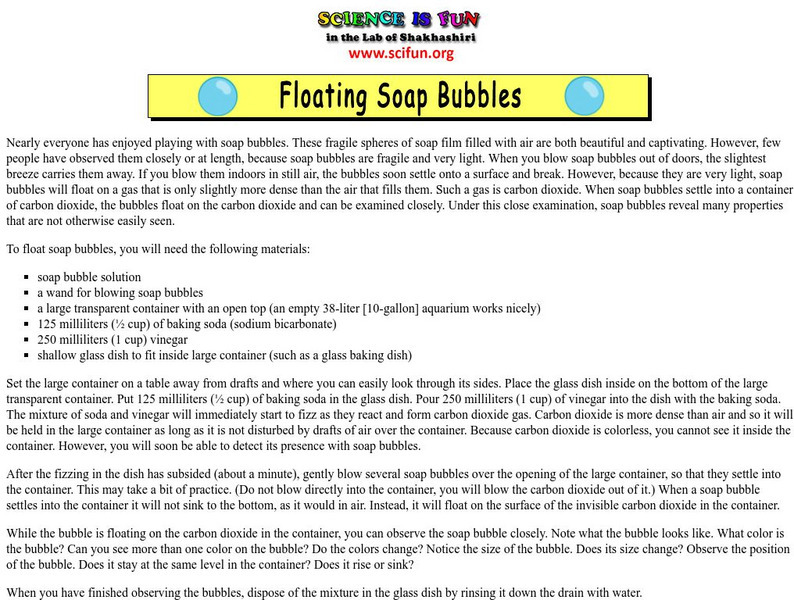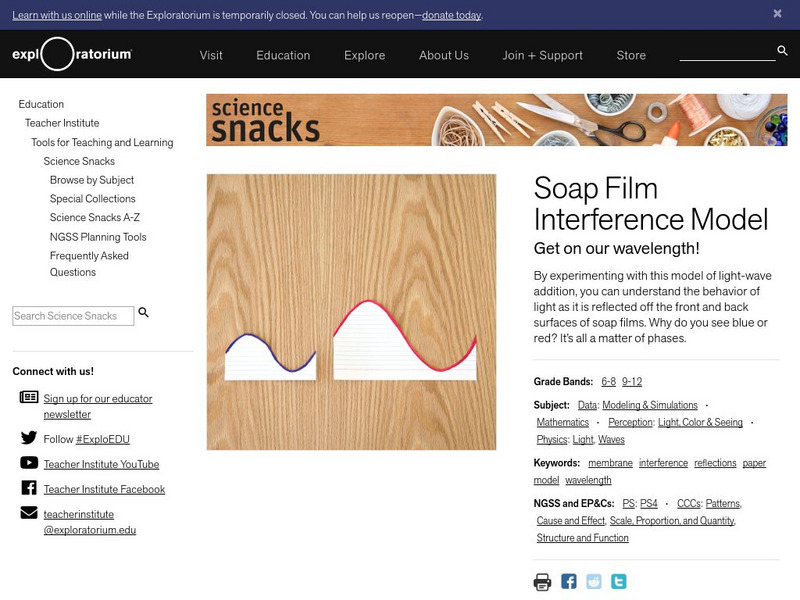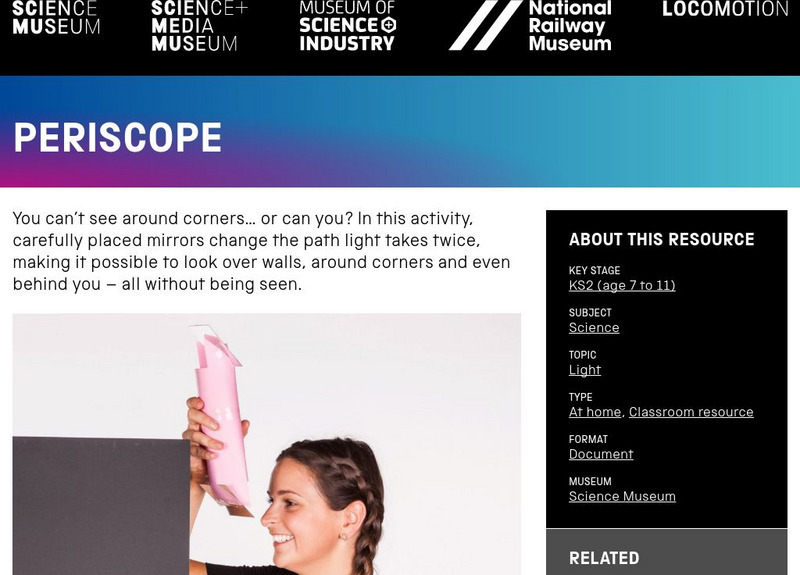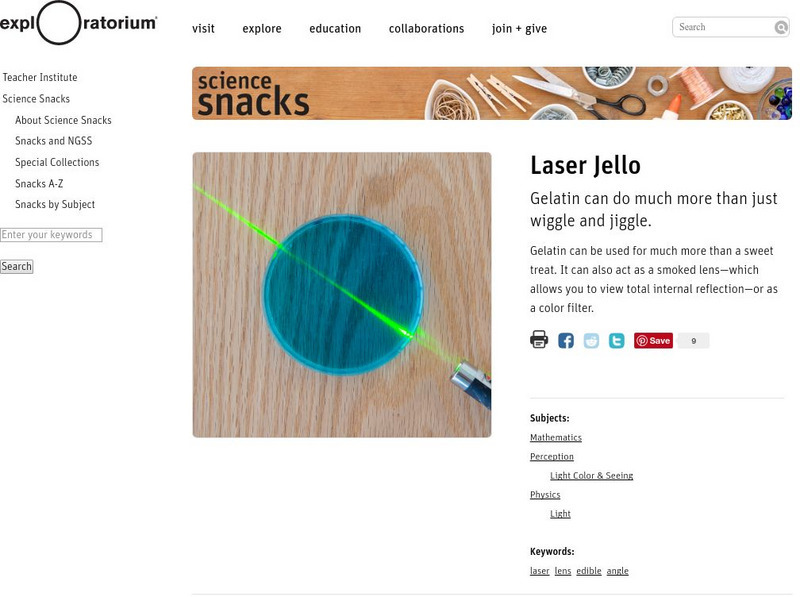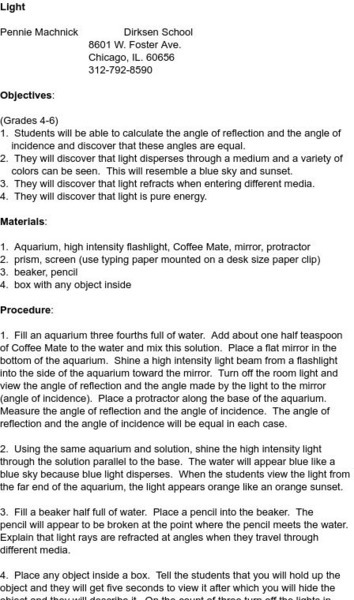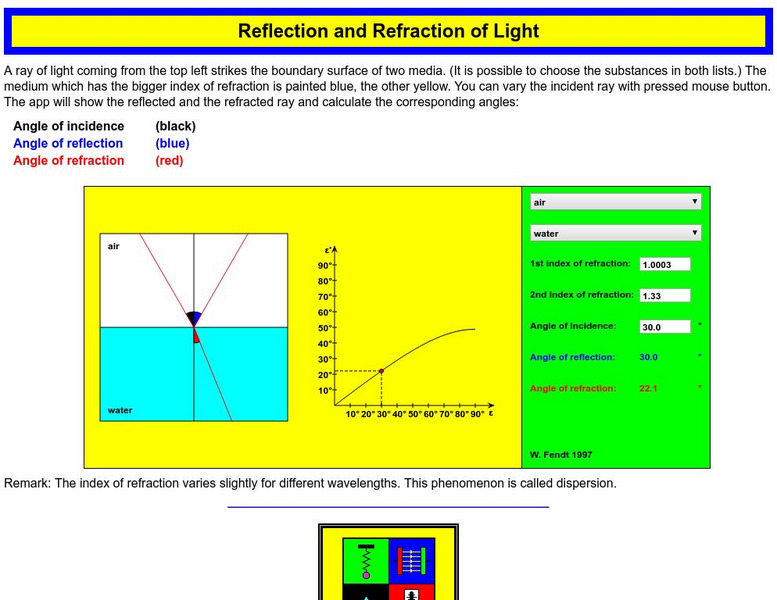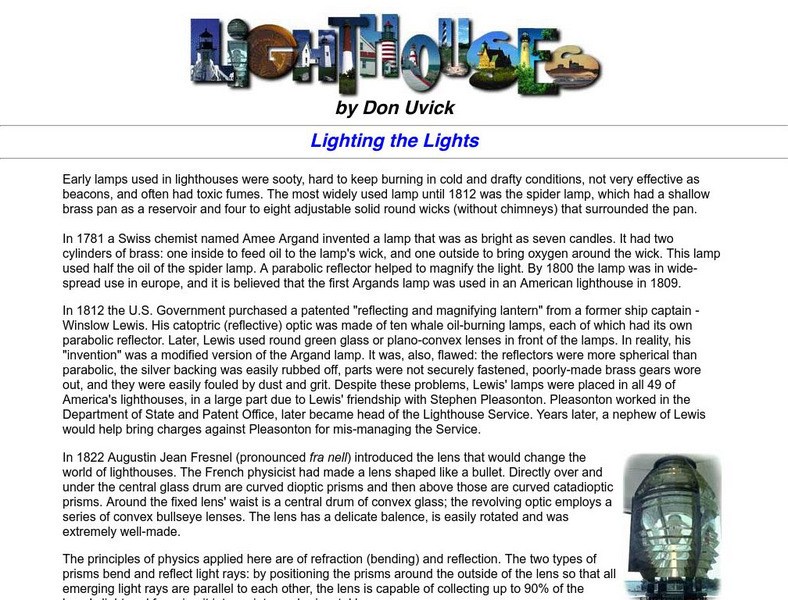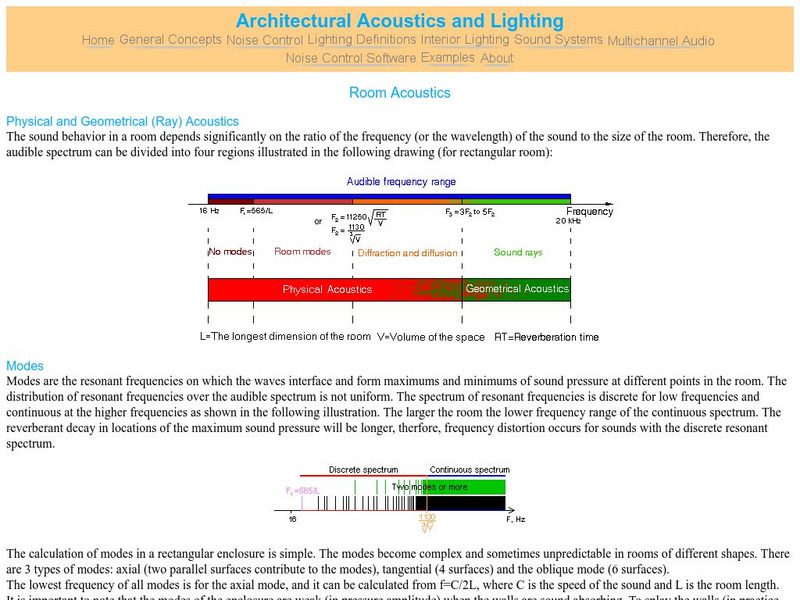Hi, what do you want to do?
Physics Classroom
The Physics Classroom: Refraction and Ray Model of Light: The Critical Angle
Illustrated examples and interactive practice problems that introduce students to the concept of the critical angle, the angle of incidence that provides an angle of refraction of 90-degrees.
Optical Society
Optical Society of America: Optics for Kids: Make a Light Fountain
A simple experiment that demonstrates the concept of total internal reflection, and shows how light can travel around curves and corners, as it does in fiber-optic cables. Accompanied by an explanation of what's happening.
Optical Society
Optical Society of America: Optics for Kids: Total Internal Reflection
An investigation into the total internal reflection of light, using a laser pointer. Accompanied by an explanation of what's happening, a discussion of Snell's Law, and links to additional information.
My Science Site
Mirrors, Lenses and Your Eyes
This resource explores the science behind light and how mirrors reflect it. Also contains information on lenses both convex and concave.
Science is Fun
Science Is Fun: Floating Soap Bubbles
In this experiment you learn how to generate carbon dioxide inside a container, and float soap bubbles above the gas. Once the bubbles are suspended, it is possible to observe them closely, which is normally very difficult to do....
Physics Classroom
The Physics Classroom: Image Formation for Concave Mirrors Case A
This animation depicts the path of light to each person's eye. Different people are sighting in different directions; yet each person is sighting at the same image location. In this animation the image location is the intersection point...
Exploratorium
Exploratorium: Science Snacks: Soap Film Interference Model
In this experiment, students construct models of larger red and smaller blue waves on index cards, and use them to investigate how light behaves when it is reflected off the front and the back of soap film.
Exploratorium
Exploratorium: Science Snacks: Soap Film Painting
Investigate the constructive and destructive interference of waves as they reflect off the front and back surfaces of soap film. See what colorful effects can be created on a large, vertical soap film surface where gravity comes into play.
Science Museum, London
Science Museum: 360 Periscope
Make a 360 degrees periscope which uses mirrors to reflect light to see around corners.
Exploratorium
Exploratorium: Science Snacks: Laser Jello
View a total internal reflection by using gelatin and a laser with this activity.
Science and Mathematics Initiative for Learning Enhancement (SMILE)
Smile: Light
For this activity, students actually find the angles of reflection and incidence.
Walter Fendt
Walter Fendt: Reflection and Refraction of Light
Defines the refraction of light and provides an applet for investigating it.
Optical Society
Optical Society of America: Optics for Kids: Guiding Light Optical Fiber
This experiment demonstrates the concept of total internal reflection, using basic materials. Accompanied by a detailed explanation of what's happening, and links to articles on reflection and refraction.
Other
Lighthouses: Lighting the Lights
A description of the early lights used in lighthouses and how these lights evolved into what they are today. Explains the contributions of Fresnel to the development of these lights; discusses the Fresnel orders.
Other
Architectural Acoustics and Lighting: Room Acoustics
This site from Architectural Acoustics and Lighting provides a discussion of various factors affecting the acoustics of a given room. Room dimensions, the wavelength of the sound wave, the physical characteristics of the walls, the...
Physics Classroom
The Physics Classroom: Polarization
"How Do We Know Light Behaves as a Wave?" An answer is provided in this discussion of the polarization of light and the use of Polaroid filters in sunglasses. The four methods discussed on this page are: polarization by transmission,...
University of New South Wales (Australia)
University of New South Wales: School of Physics: Physclips: Geometrical Optics
Physiclips thoroughly presents geometrical optics concepts like rays, refraction, Snell's law, total internal reflection, dispersion, mirrors, and lenses with animations and film clips.
University of Maryland
Optics Highlights: The Telescope
Part of an anecdotal history of optics and the study of light. Extremely thorough treatment of the invention of the telescope. Includes a short biographical sketch and discusses the work of Isaac Newton which focuses on his contribution...
Open Curriculum
Open Curriculum: Bounded Waves
To understand how bounded waves behave and how reflection of waves affects the wave components.
My Science Site
Optics: Energy and Control [Pdf]
A very comprehensive unit including topics such as light and its source, visible sources of light, transparency of objects and much more. Also offers a resource list, blackline masters, and expectation list, expectation summary and a...
Exploratorium
Exploratorium: Science Snacks: Disappearing Glass Rods
In this activity, you will make a glass object disappear by eliminating the reflection from and the refraction by the glass object.
Center of Science and Industry
Cosi Columbus: Two Lenses in One
Investigate the behavior of a water filled vial, and discover why it acts like a magnifier. Includes full list of materials, procedures, and scientific explanation of what causes light rays to change direction.
University of Maryland
Optics Highlights: Optics, Electromagnetic Waves, Quanta
Part of an anecdotal history on optics and the study of light. Extremely thorough treatment of the scientific evidence which led scientists to believe in the particle nature of light. Includes a short biographical sketch and discusses...
Physics Classroom
The Physics Classroom: Reflection and Mirrors: Optics Bench Interactive
Find out about the physics behind those fun-house mirrors. Students manipulate a virtual optics bench to explore the images formed by mirrors and lenses.
Other popular searches
- Light Reflection Refraction
- Reflection of Light
- Light Reflection Mirrors
- Light Reflection by Mirror
- Science Light Reflection
- Light Reflection and Color
- Reflection Light
- Light Reflection and Mirrors
- Light Reflection Projects
- "Reflection" Light
- Light Reflection Internet
- Reflection of Light Waves








